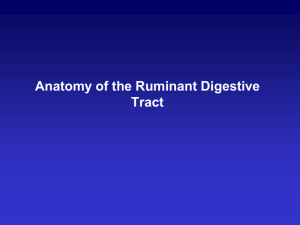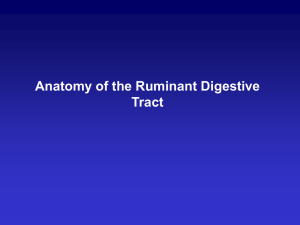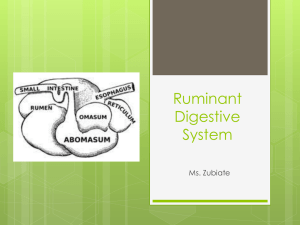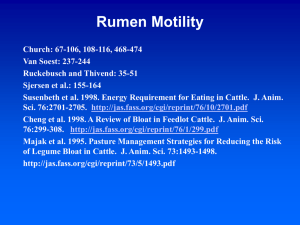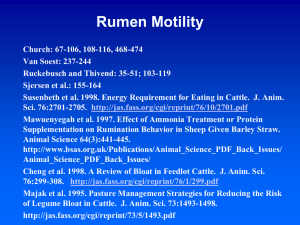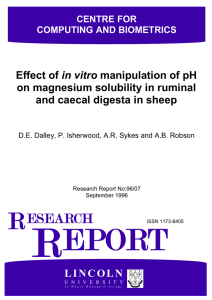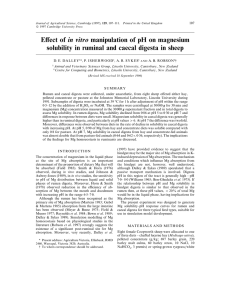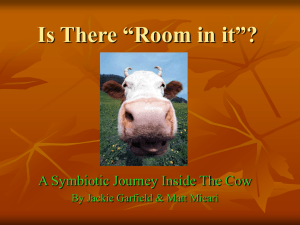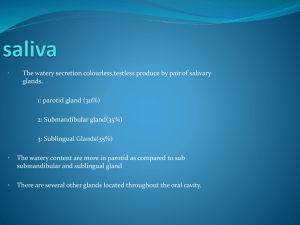Rumen anatomy
advertisement
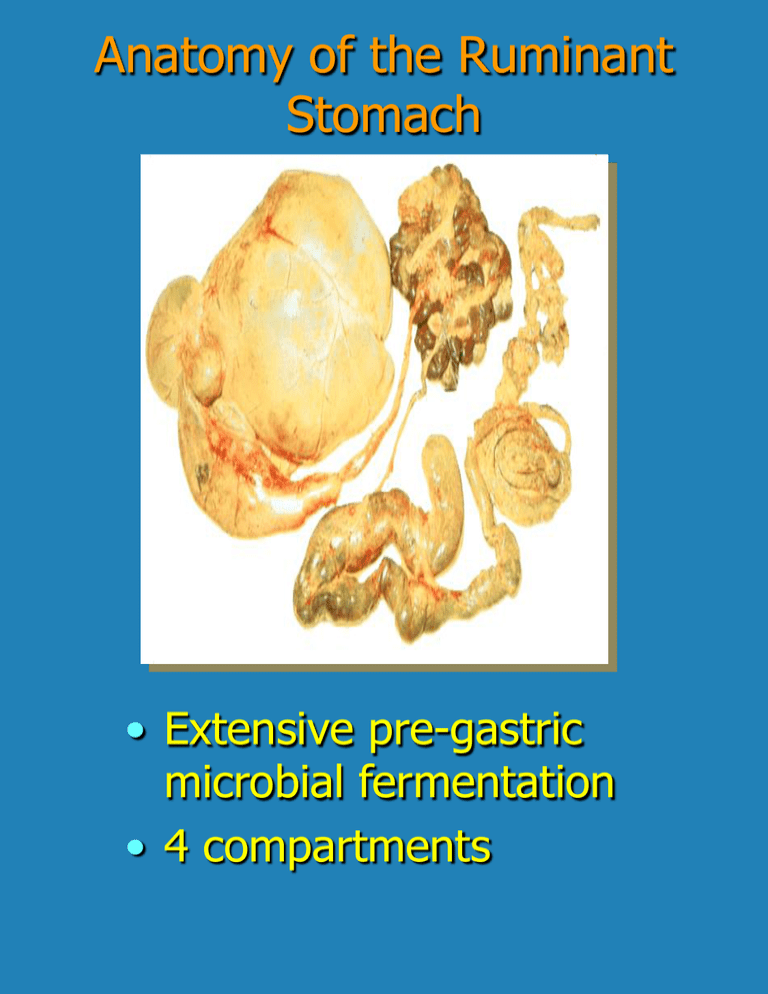
Anatomy of the Ruminant Stomach • Extensive pre-gastric microbial fermentation • 4 compartments Cow rumen Cow reticulum The interior surface of the rumen Reticular epithelium The inside of the omasum Lining or epethelia of the reticulo-rumen cattle (left), sheep (right) • Papillae most dense in the ventral sac • where most absorption occurs Papillae development Fermentation/absorption driving factor Reticular groove (pinned in an open position) cardia reticuloomasal orifice Reticular groove (in a closed position) esophagus reticular groove Omasum tightly packed with digesta (left) leaves or folds Cow omasum Function of the Omasum • acts as a filter to sort out liquid and particles for passage to the abomasum • selective retention of the coarse particles • absortive site for water, VFA, Na, K, etc • reduction of the net volume entering the abomasum Abomasum duodenum pylorus fundic fundic folds (unique) Cow abomasum Function of the Abomasum • digesta to abomasum continuous • thus, continuous secretion of gastric juice (pepsin. HCl) • stimulated by VFA and lactic acid • short retention time (< 3 h) • digesta entering: pH 6.0 • digesta leaving: pH 2-3 Motility • Mixing of digesta • passage of digesta through the reticular-omasal orifice Rumen motility • Contraction/relaxation of reticulo-rumen – moves and mixes digesta – passage of digesta through the reticular-omasal orifice • initial contraction of the reticulum • 2nd powerful contraction of reticulum • wave of contractions passing over rumen • about 60 secs Contraction sequence of RR Movement of Digesta Rumination - “cud-chewing” - regurgitation of digesta - re-swallowing of liquid and fine particles - mastication/ensalivation of bolus (40 - 70 sec) - pause (2 - 6 sec) Eating and ruminating • increases saliva secretion • helps reduce particle size of feed • promotes passage of digesta from the RR which alleviates gut fill Eructation c. Rumen contraction forces gas to the back and then forward d. Gas forced up esophagus to the trachea Esophageal Fistulae Rumination boluses (liquid) up down Rumination boluses (dry) up down Role of rumination • saliva secretion – 2-4 x higher than during resting • particle size reduction Chewing activity of dairy cows Eating Ruminating 10 8 h/d 6 alfalfa hay 4 alfalfa hay orchardgrass corn silage 2 0 10 15 20 25 30 35 40 10 15 20 NDF-f (% DMI) 25 30 35 40 Rumination by feedlot cattle Coarse 86 Medium 81 Medium fine 75 Fine 69 8.1 13.6 6.8 13.3 Diets contained 10% silage (DM basis) Ruminating, h/d 9.4 Total chewing, h/d 16.1 9.3 15.8 Silage Straw Diets contained 5% forage (DM basis) Ruminating, h/d Total chewing, h/d 4.4 7.3 5.5 7.9 Salivation • lubrication of feed for swallowing • passage of feed through the GI tract • buffers (bicarbonate, phosphate) acids produced during digestion • enzymic activity – no amylase in ruminants – pregastric esterase or lipase (preruminant) • nutrients for microbes: mucin, P Mg, Cl • anti-frothing properties (bloat) Salivary glands Parotid saliva: ~ 50 % of total saliva Amount of Saliva • parotid cannulation – total collection of saliva – only one duct • re-entrant parotid cannulation • collection at the cardia using a bag – requires partial rumen emptying Sheep Do animals that eat more slowly produce more saliva ? VFA feed digestion VFA product ion Rumen pH saliva chewing particle length Effects of level of fiber in the diet on ruminal pH of dairy cows
